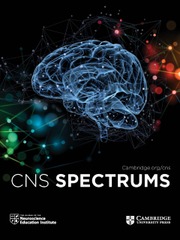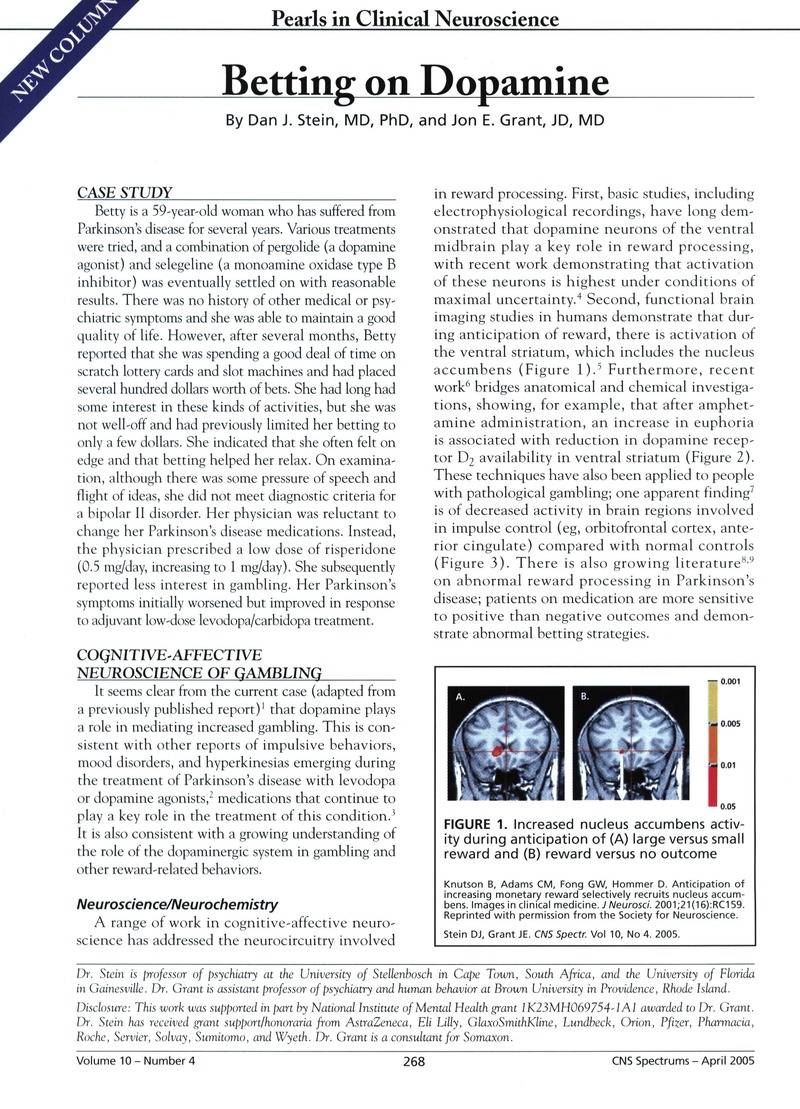Crossref Citations
This article has been cited by the following publications. This list is generated based on data provided by Crossref.
Stein, Dan J.
and
Lochner, Christine
2006.
Obsessive-Compulsive Spectrum Disorders: a Multidimensional Approach.
Psychiatric Clinics of North America,
Vol. 29,
Issue. 2,
p.
343.
Avanzi, Maurizio
Baratti, Mario
Cabrini, Silvia
Uber, Elena
Brighetti, Gianni
and
Bonfà, Flavio
2006.
Prevalence of pathological gambling in patients with Parkinson's disease.
Movement Disorders,
Vol. 21,
Issue. 12,
p.
2068.
Driver-Dunckley, Erika D.
Noble, Brie N.
Hentz, Joseph G.
Evidente, Virgilio G.H.
Caviness, John N.
Parish, James
Krahn, Lois
and
Adler, Charles H.
2007.
Gambling and Increased Sexual Desire With Dopaminergic Medications in Restless Legs Syndrome.
Clinical Neuropharmacology,
Vol. 30,
Issue. 5,
p.
249.
Ondo, William G.
and
Lai, Dejian
2008.
Predictors of impulsivity and reward seeking behavior with dopamine agonists.
Parkinsonism & Related Disorders,
Vol. 14,
Issue. 1,
p.
28.
Lader, Malcolm
2008.
Antiparkinsonian Medication and Pathological Gambling.
CNS Drugs,
Vol. 22,
Issue. 5,
p.
407.
Grant, Jon E.
Black, Donald W.
Stein, Dan J.
and
Potenza, Marc N.
2009.
Pathological Gambling and Nicotine Dependence.
Journal of Addiction Medicine,
Vol. 3,
Issue. 3,
p.
120.
Moum, Sarah J.
Price, Catherine C.
Limotai, Natlada
Oyama, Genko
Ward, Herbert
Jacobson, Charles
Foote, Kelly D.
Okun, Michael S.
and
Oreja-Guevara, Celia
2012.
Effects of STN and GPi Deep Brain Stimulation on Impulse Control Disorders and Dopamine Dysregulation Syndrome.
PLoS ONE,
Vol. 7,
Issue. 1,
p.
e29768.
Narayanaswamy, Janardhanan C
Jose, Dania
Kalmady, Sunil
Venkatasubramanian, Ganesan
and
Reddy, YC Janardhan
2013.
Clinical correlates of nucleus accumbens volume in drug-naïve, adult patients with obsessive–compulsive disorder.
Australian & New Zealand Journal of Psychiatry,
Vol. 47,
Issue. 10,
p.
930.


